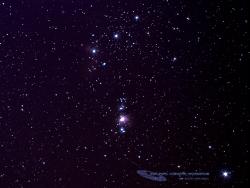
Public Observation Night
- Where:
- Frosty Drew Observatory
- When:
- Friday January 11, 2013 at 6:00 p.m.
- Cost:
- Free! Donations Appreciated.
Conditions don’t look very good for observing tonight, so most likely the observatory will not be open. But, if you’d like a chance to do a little astronomy on a rainy evening, you might think about coming to the URI Planetarium for a program on the history of our travels into space. Titled Dawn of the Space Age, this award-winning presentation begins with the tiny Sputnik satellite, and goes up to our hoped-for trips to Mars. This program, which will be shown tonight at 6:00 P.M. at the planetarium, on the URI campus, on the corner of Upper College Road and Engineering Row, is only $5.00, to benefit both the Frosty Drew and Planetarium funds.
It’s sad that the skies appear so awful tonight, because there are four Iridium satellites that will be flaring in our skies, beginning with the first at 5:32, and ending with the fourth at 6:12. If you’d like to be optimistic and try to observe these, visit Heavens Above. You will then have the list of satellites for tonight and for the next few days.
Classes for the next Introduction to Astronomy will be the first three Saturday afternoons in February, the 2nd, 9thand 16th, at 2:00 P.M. For further information, visit frostydrew.org, or come down on a Friday night.
Thanks to all who continue to help our Observatory be located in the darkest skies in Rhode Island.
-Francine Jackson
-------------------------------------------------------------------------
Tonight's weather forecast is calling for clouds, fog, and rain. These conditions will likely keep the observatory telescopes closed. Be sure to swing by the University of Rhode Island Kingstown campus Planetarium today for a showing of Dawn of the Space Age at 6:00 p.m. ($5.00 admission).
This past Wednesday, asteroid Apophis swept past Earth at a relatively close distance (but not that close) at 0.1 AU (Astronomical Units, 1 astronomical unit is the distance from the Earth to the Sun). Apophis, about the size of 3.5 football fields, has gained popularity over the past decade with the once thought possibility that it may strike Earth in 2029 or 2036. This week's passing of the asteroid has given us another opportunity to study its orbital cycle and confirm that we will be safe and sound come 2029 and 2036. To keep up with near Earth asteroids and what to expect, visit the JPL Asteroid Watch project.
Lets hope for some clear skies without full Moon phases at Frosty Drew.
-Scott MacNeill
